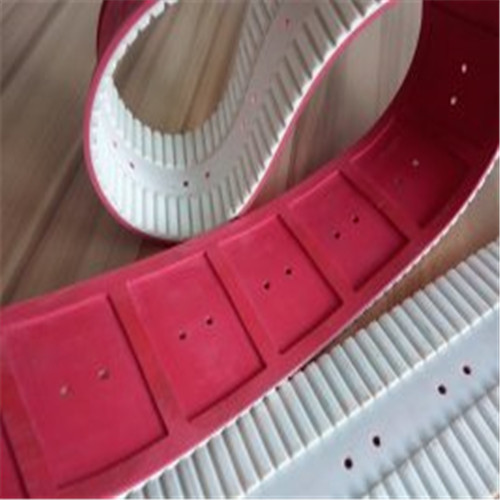at present, the vacuum adsorption conveyor and transmission process only processes the original synchronous belt, which is generally slotted and perforated for adsorption. This adsorption conveyor belt is prone to air leakage on both sides during the operation and transmission process, resulting in easy displacement of glass and ceramics and insufficient adsorption force during the transmission process; Moreover, in the process of use, due to the intermediate adsorption effect, the vacuum adsorption conveyor belt is easy to turn up on both sides of the conveyor belt, resulting in air leakage, resulting in displacement due to insufficient suction in the transmission process of glass and ceramics, thus affecting the processing effect of glass. Now let’s take a look at the application advantages of this vacuum synchronous belt in glass-ceramic conveying machinery!

Glue the grinding window on the red surface of the vacuum synchronous belt, mill the teeth in the middle of the tooth surface, and punch the synchronous belt. The application of vacuum belt effectively ensures the adsorption quality of glass in the transmission process and improves the production efficiency at the same time. The bottom belt of the vacuum synchronous belt is made of high-strength, low elongation steel wire rope and thermoplastic polyurethane raw materials through a special process. Rubber is added on the surface to increase friction, soft tension, high temperature resistance and prolong the life of the belt; Thicken Pu to increase wear resistance; Add dark green pattern to increase friction; Guide strip is added on the tooth surface to prevent deviation… It is widely used in ceramic / glass machinery!